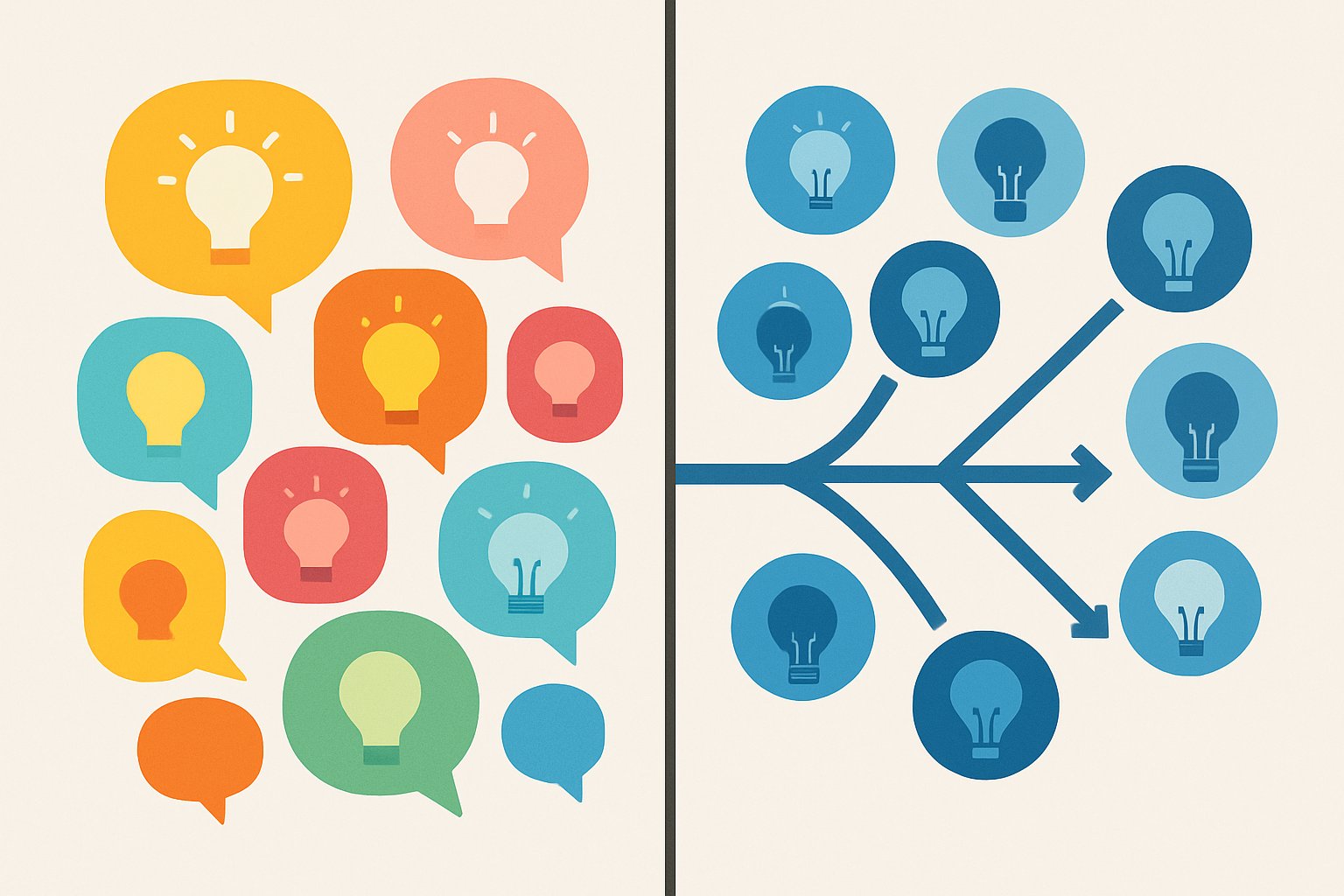
AI CERTS
13 hours ago
Cognitive AI Collaboration Reshapes Brainstorming Outcomes
Moreover, we explore augmented ideation tactics and human-in-the-loop creativity workflows. Practitioners will find data, quotes, and action steps. Consequently, leaders can design sessions that extract AI benefits without sacrificing surprise.

Rising Creativity With AI
Multiple experiments reveal encouraging gains. Lee and Chung’s 2024 Nature Human Behaviour study tested ChatGPT against Google search and solo work. Participants using Cognitive AI Collaboration generated 18% more ideas and earned higher creativity ratings. Additionally, novices closed gaps with experts, supporting the democratization narrative.
Researchers link the boost to combinatorial power. The model blends remotely related concepts quickly, unlocking augmented ideation for incremental innovation. Nevertheless, radical breakthroughs remain rare. These findings underscore AI’s role as a spark, not a standalone inventor.
Individual creativity improves when prompts are diverse. Therefore, teams should vary questions, personas, and knowledge sources. These insights lay the groundwork for deeper analysis. However, the next section exposes a troubling downside.
Evidence From Controlled Experiments
Wharton scholars Meincke, Nave, and Terwiesch ran five follow-up studies in 2025. Cognitive AI Collaboration again raised average novelty. In contrast, idea overlap skyrocketed. One toy design task showed only 6% unique outputs among AI users versus complete uniqueness for human-only groups.
A 2025 Berkeley meta-analysis pooled 28 experiments and 8,214 participants. Results confirmed modest novelty gains but dramatic diversity declines. Moreover, the review blamed excessive anchoring on initial suggestions. Consequently, researchers advise structured alternation between machine and human rounds.
These numbers emphasize a paradox. AI helps individuals yet hampers the collective search space. Therefore, managers need targeted safeguards. The next section details the diversity crisis and its root causes.
Diversity Declines At Scale
When hundreds query the same model, responses converge. Moreover, public prompts often replicate online examples. Cognitive AI Collaboration then funnels everyone toward similar associative paths. Idea pools shrink, reducing chances of breakthrough discoveries.
Hallucination further complicates evaluation. Fluent but false claims can mislead feasibility checks. Additionally, legal research shows high citation errors, raising risk in regulated domains. Consequently, blind reliance threatens both creativity and compliance.
These challenges highlight critical gaps. Nevertheless, understanding the mechanism enables effective countermeasures. The next subsection explains the so-called sprinkler trap.
Understanding The Sprinkler Trap
Meincke and colleagues coined the sprinkler analogy. Watering one corner helps a plant, yet spraying everywhere dilutes pressure. Similarly, augmented ideation benefits one user, but universal dependence lowers ecosystem originality.
Key drivers include:
- Shared training data that steers outputs toward high-frequency patterns.
- Uniform prompting styles that reinforce convergence.
- Social loafing, where users accept first suggestions without critique.
Consequently, the trap combines technical and cognitive factors. Researchers label mixed sessions with human-in-the-loop creativity as an antidote. These insights set up the discussion on practical fixes.
Diversity loss endangers innovation pipelines. However, deliberate process design can reverse the slide. The following section presents tested interventions.
Human-Guided Process Fixes
Academics and consultants propose centaur-style workflows. Firstly, start with human-only divergence before any prompts. Secondly, inject Cognitive AI Collaboration only for expansion, not seeding. Moreover, switch back to human evaluation phases for convergence.
HCI research recommends chain-of-thought prompting and retrieval-augmented generation. These techniques surface reasoning steps and ground facts. Additionally, forcing the model to “argue against itself” encourages variant pathways, bolstering augmented ideation.
Professionals can enhance expertise with the AI + Everyone certification. The program covers human-in-the-loop creativity, governance, and ethics. Therefore, credentialed leaders can institutionalize robust playbooks.
Structured safeguards restore diversity while keeping speed gains. Consequently, teams maintain a competitive edge. The next subsection converts theory into a step-by-step guide.
Practical Team Ideation Playbook
Use this concise checklist:
- Open with ten solo ideas per participant.
- Run AI prompts using at least three varied personas.
- Mix outputs anonymously and blind-rate novelty.
- Hold a fact-checking sprint using external databases.
- Select winners and iterate with new prompts or experts.
Additionally, rotate models to inject lexical diversity. In contrast, sticking with one vendor magnifies convergence risks. Moreover, schedule periodic skill workshops to prevent creative atrophy.
This playbook operationalizes research insights. Therefore, organizations can scale Cognitive AI Collaboration responsibly. A governance lens now becomes essential.
Governance And Next Steps
McKinsey’s 2025 Superagency report values AI’s economic upside at $4.4 trillion. However, the consultancy warns that ROI depends on process redesign. Policy teams must mandate documentation of model version, prompt library, and evaluation metrics.
Moreover, leaders should track diversity indicators alongside novelty scores. Governance dashboards can issue alerts when overlap exceeds thresholds. Additionally, legal review should audit hallucination-prone outputs before public release.
Cognitive AI Collaboration will soon integrate multi-agent orchestration and provenance tags. Consequently, managers who adopt early will shape standards. These steps complete the safeguards loop. The conclusion distills final takeaways and action calls.
Evidence paints a clear picture. Cognitive AI Collaboration lifts idea quantity and individual novelty. Yet, unchecked usage erodes diversity and invites factual missteps. Moreover, augmented ideation thrives only when paired with human-in-the-loop creativity protocols. Researchers advocate staged prompts, blind ratings, and rigorous grounding. Consequently, teams that embed these principles gain sustained creative advantage.
Leaders should pilot the playbook today. Furthermore, consider earning the AI + Everyone certification to deepen governance skills. Act now to future-proof your brainstorming culture.



